This page contains a list of subjects in alphabetical order. Each item links to more resources and ongoing projects.
Austerity
High demand for services can be managed by shortening the work with the person and discharging them. Click here to see the consequences of this approach. Click here to find out more about the Austerity Triangles – a powerful approach to staying person-centred while the budget for health and social care shrinks. Meanwhile, recognising the harm here caused through providing too much support can help to keep things in perspective. Financial pressure on health and social care organisations is creating an environment of chronic uncertainty for some frontline staff, as described here. If treated right, cuts can even be good news, as shown here.
Boundaries
Boundaries have to be renegotiated in an inclusive world, where a worker’s leisure life may intersect with that of someone using health and social care services.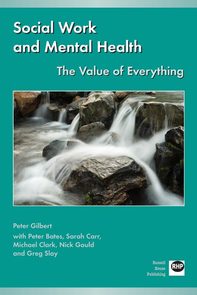
- A long technical paper that attempts to unpack the issues that arise at the intersection of professional boundaries, community inclusion and safeguarding is available here.
- The Boundaries Clock is a rigorous, systematic approach to working out how to balance inclusion and risk in navigating this complex area. You can read about it in my chapter of the book advertised here or see examples of the Boundaries Clock being used in a Community Circle here, a Timebank here, in L’Arche communities here, in a hospital chaplaincy here and with peer volunteers here. Some worksheets to help you use the Boundaries Clock are available here, here and here.
- I have developed the concept of ‘Boundary Attitude’ to explain how staff deal with real life situations. Read the evidence here.
- A paper exploring the topic of professional boundaries as it applies to the use of Facebook is available here.
- I have worked with Sam Smith and colleagues at Altrum to craft this policy on Rights, Relationships and Professional Boundaries here.
Community Mapping
Download an article here to see one way of analysing your community’s strengths before designing any kind of project. Guidance written for the Scottish Government (available here) offers advice on carrying out ‘Mystery Shopping’ audits (appendix 1) and a whole-system audit (appendix 2) to help you assess how accessible your community is to people with mental health issues, learning disabilities or personality disorder. Additional lists of things to look out for are available for neighbourhoods here, education here, volunteering here, sports here, arts here, employment here and faith communities here. First impressions of over 500 community groups and organisations (are they welcoming?) have been collated here to provide real evidence of how widespread these experiences are.
Creative Writing
Click here to read a call for evidence to show whether therapeutic writing groups are linked into their local community, and click here for the response.
Day Opportunities
During the 1980s, I developed a service called SPAN, which was featured in a 1993 video from the NHS Management Executive Mental Health Task Force, called Meeting need – leisure and occupation. You can download the clip here. You can use the questions here to help you design an effective service. Click here to see a video about The Network, an exciting mental health service that has combined evidence-based clinical interventions, a strong focus on social inclusion and the promotion of informal friendship. I helped the Network to produce a training manual on supporting informal friendship groups here. A 2008 discussion available here explores the feeling of safety that people often associate with familiar buildings and groups, and you can reflect with me here on leaving people behind in times of change.
Employment
This is a big topic and has been a feature of my work for over 30 years. Just as an example, see my 1996 survey of employment aspirations and a discussion here of the key decisions that need negotiating when setting up a social firm. Consider how to organise your staff teams in relation to the vocational agenda here.
Empowerment and participation
It is hard for the powerful to give up control, and this is discussed here. The Keys to Power series was launched through asking a series of questions here which explored how practical decisions can be shared with or handed over to people using social care services. Specific ‘keys’ are discussed in turn by setting out some of the practical ways to share power through the following activities:
- staff meetings. See here. A longer piece on redesigning meetings to make them accessible can be downloaded here.
- keyholding. See here.
- staff recruitment. See here. Thirty percent of staff working in mental health and learning disability organisations were recruited by a panel that included a service user or carer – see this graph here. A guide explaining how to include public representatives on staff recruitment panels is here.
- building maintenance. See here.
- insurance. See here.
- cash handling. See here.
Or you can read the full report here.
Faith communities
- A short book chapter (see the flyer here) explores how membership of a faith community can support someone with mental health issues
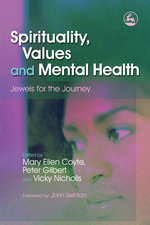
- This workbook helps church groups to consider how they welcome everyone.
- A detailed discussion here with Rev Nigel Rooms considers how inclusion work is all about carrying a message from one culture into another, and so draws on academic studies of inculturation.
Friendship
Friendship is often crucial in making life sweet and in making all the difference between merely attending a community activity and genuinely belonging. Most of us spend a lot of time thinking about our friendships, but it is less common to examine the research and think critically about how to create an environment where new friendship has a chance to grow between people who need support and members of the general public. Here is a short introduction to the core values that sometimes lie behind our actions in this field, a list of questions here to help with reflecting on the diverse nature of friendship, and an ideas bank here on how to create a friendship-friendly environment.
Green Light
Green Light is the name for a body of work on how to support people living with autism or learning disabilities who experience mental health issues.
- How can services respond well to peopl
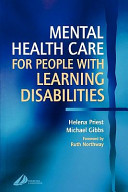 e who have a mental health issue alongside learning disabilities or autism? I reviewed the field at the end of 1999 in a paper published here, and contributed to a workshop here and a conference here. In 2004, I contributed a book chapter that catalogues many of the ways in which services can respond well.
e who have a mental health issue alongside learning disabilities or autism? I reviewed the field at the end of 1999 in a paper published here, and contributed to a workshop here and a conference here. In 2004, I contributed a book chapter that catalogues many of the ways in which services can respond well.
- A survey of the attitudes and knowledge of learning disability staff regarding mental health issues is reported in Bates P Priest HM & Gibbs M (2004) The education and training needs of learning disability staff in relation to mental health issues Nurse Education in Practice March 2004, Vol 4 (1), p30-38.
- This early work was refreshed in 2012 in a national review of the reasonable adjustments made by mental health services to enable them to provide an effective service for people with autism or learning disabilities See the full report here and a summary by the NHS Confederation.
- The old Green Light Toolkit 2004 here was refreshed to create a new team self-audit tool and guidance on making changes so that mainstream mental health services provide effective support to people who have autism or learning disabilities. It’s all in the Green Light Toolkit (2013, revised 2017) here. A progress report on Green Light Work in five NHS Trusts is available here.
- NHS England commissioned a refresh of the Green Light Toolkit that was published in 2022 here. This includes an online analysis service and the Toolkit is introduced in this short video.
Inclusion
- Thinking clearly about an included life is a really important place to start. Watch this 30 minute presentation in which I set out my own thinking on the issues. See how Jack Pearpoint and Marsha Forest summarised the core beliefs of the inclusion movement here, while Clive Miller here highlights the need for shared effort in building a community fit to join. A simple framework considering inclusion as access, standard of living and relationships is summarised here. As a more complicated argument, a series of papers critique the social model of disability, institutionalisation and empowerment in order to think theoretically about inclusion – see paper 1 here, paper 2 here, and paper 3 here. Thinking clearly also means going slowly and thoughtfully rather than rushing things, so there’s a paper on the benefits of slow inclusion here.
- Community Mapping helps to find out how the local community works – see the section above.
- Inclusion Traffic Lights are a helpful model to think about how services are configured. This comic strip provides a brief explanation. Click here for a comparison of the upside and downside of each of the three options and here for information on how to use the traffic lights to evaluate services. Reasons why people get stuck in red places and what can be done about it can be be found here, with one solution set out here that shows how to identify the community equivalent of each activity taking place in red or amber settings. If you need to continue to run them, Here is how to ‘exclusion proof’ your red and amber services, along with a discussion about ‘greening up’ your red building here. Sometimes the whole traffic light concept is used wrongly and causes problems, so you can read about ‘Accidents at the Inclusion Traffic Lights’ here.
- There are a range of different instruments a
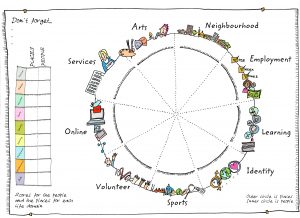 vailable to measure inclusion. A trawl of these measures was done in 2002 and these are indexed here. One of my own devising is the Inclusion Web which helps in getting to know the person and also provides some quantitative data for commissioners. More details here. The Inclusion Web is cited in Sue Parkinson’s 2014 book ‘Recovery through activity’.
vailable to measure inclusion. A trawl of these measures was done in 2002 and these are indexed here. One of my own devising is the Inclusion Web which helps in getting to know the person and also provides some quantitative data for commissioners. More details here. The Inclusion Web is cited in Sue Parkinson’s 2014 book ‘Recovery through activity’.
- Life domains are a useful way to think about specific layers of community. For example, see articles on museums here, gardening here, church here and creative writing here. Employment and volunteering have their own sections elsewhere on this page. Three hypotheses that I sometimes use to explore why people are excluded can be applied to each of the life domains to both identify barriers and suggest solutions – the evolving analysis is here.
- Strategies for promoting inclusion. 113 different ways to support inclusive lifestyles are catalogued, illustrated and referenced in the Social Inclusion Training Pack. The chapter and section headings that form the structure for the Training Pack are listed here and the whole training pack can be found here. Some of these resources are referenced elsewhere, such as by SCIE.
Innovation Mapping
Innovation Mapping is an approach I have developed to move beyond basic mapping exercises that attempt to take a snapshot of how things are, to a process that co-produces a better future through a series of consensus and self-audit exercises. Read about it in the 2005 paper ‘Learning from Experience’ here. there are similarities with a coproduction approach I have developed called ‘Writing in Public’ which is further discussed here.
Leadership
Leadership is a popular topic at present. Here is proforma for thinking about your purpose, unique selling point or philosophy of care. Peter Gilbert and I discuss storytelling as one of the essential skills of leadership here, and my reflections on the nature of leadership in learning disability services appears in a book chapter published as a tribute to Peter in 2014 – details are in my library.
Measurement
- Several approaches have been explored to measure inclusion. A survey of current measures was undertaken in 2002 and is reported here. That yielded a simple approach of comparing some specific activity levels with those that can be observed in the general population, as shown here. See the section on Inclusion above to find out about the Inclusion Web that can be used to track how people are building connections over time, and to evaluate service effectiveness.
- Various audit tools have been developed to measure the ability of an organisation or team to deliver specific goals. For example, CAIRO here links team climate with how risk is managed and opportunity supported for individuals.
Mentoring
Just a few items here, and not very profound.
- Find a checklist here on cross-agency mentoring
- An adapted version for creating a mentoring relationship between a person with lived experience and a researcher is here
- The group that created the adaptation above also produced these ten top tips.
Money
Click here for a page of items on money.
Organisational and individual competencies
Competences that result in an included life are discussed here. Organisations need to align their systems, job roles and outcome monitoring with their goals.
- If a key focus is community inclusion, then here’s a self-audit tool that works at the level of the individual here, the team here, and the whole organisation here.
- The wide-ranging competencies needed by individual staff and their employing organisation to support inclusive lifestyles are described here, with a suite of job descriptions here.
- The recruitment and selection of staff is improved by fully involving people who use those services in the process of choosing staff. A chart here shows how common this practice is in mental health and learning disability services and you can read some tips here on how to involve people in recruitment and selection processes and read a guide on the topic here.
- Providing subtle support in community settings requires the particular skills you can read about in the award-winning article here.
- Staff who have boundary-spanning roles may engage in cross-agency mentoring, so here is a checklist of issues to explore when negotiating this kind of relationship.
Person-centred and Community Focused
We have been aware of the dangers of institutional services since the pioneering work of Barton and Goffman fifty years ago. Click here to see some resources on how this can be overcome through the twin prongs of person-centred and community-focused approaches.
Risk
Risk and safeguarding needs a fresh approach if we are to support people to live well in the community. Click here to read about some of the unspoken assumptions that make services risk averse.
Sometimes it is the culture of the individual team that blocks positive risk taking, and this can be analysed through a team self-assessment tool called CAIRO that helps teams to take responsibility for their own culture and build an action plan to improve things where that is needed. This varies from some other team climate inventories (such as those reported here) as it focuses entirely on the culture which drives risk-related behaviours and structures. Click here for the book chapter or here to use CAIRO online in your own team).
Our personal risk management system as ordinary human beings is called ‘feeling scared’, so here are a range of ways to respond to it.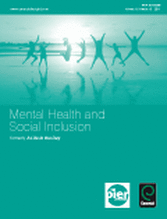
Self neglect
I first explored this topic in an article here written with Joe Pidgeon back in 1990. Much more recently, I have focused on poor hygiene as one expression of self neglect and written about it here and here. You can see a short checklist of issues to take into account here. You can download my e-book on this complicated topic here. Finally, see Washkit – an incomplete resource designed to help in support planning with people who self-neglect.
Story telling
Click here to read a paper on leadership as storytelling. I sometimes help teams that have forgotten their own history or lost it through merger with another team to tell their stories and so reclaim some of their heritage. Contact me here if you would like to discuss this for your team.
Training
Over the years I have developed a few approaches to delivering training and facilitating team discussion and decision making. A book chapter that captures some of what I have learnt about training was written in 2007 and is called ‘Towards social inclusion’ – details are in my library. A checklist of issues to consider when making events accessible to all is here. A self-audit tool for groups (including staff teams, but useful with any group) is available here, although you will need to do some craftwork first!
Volunteering
Volunteering is worthwhile for all, but people with mental health issues or other disabilities are sometimes excluded from these opportunities.
- Back in 2001, funding was make available to research Supp
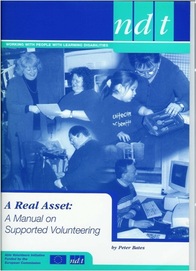 orted Volunteering schemes in Germany, Spain and the UK. That project is introduced here. The resultant manual on how to set up and run a Supported Volunteering Scheme is available here (read it in German here or in Spanish here– with apologies for the poor quality pdf).
orted Volunteering schemes in Germany, Spain and the UK. That project is introduced here. The resultant manual on how to set up and run a Supported Volunteering Scheme is available here (read it in German here or in Spanish here– with apologies for the poor quality pdf). - You can click here for a framework showing how to analyse your local community in order to identify factors that should affect the design of your scheme.
- If you are thinking about unpaid work experience in a commercial setting (rather than volunteering for a charitable or community organisation), then see some guidelines here.
- A simple framework for clarifying responsibilities between the volunteer and other agencies involved in their life is the 4-way volunteer agreement.
- Some employers offer a chance for their staff to engage in Employee Volunteering, perhaps through using their skills to help a local charity. Does this reap rewards for the employer too, as staff return to their desk with added enthusiasm and commitment, giving their voluntary effort to the workplace too? I’d be interested in exploring this important question.
Wellbeing
This is a popular theme, especially since the creation of Health and Wellbeing Boards in England. One aspect of wellbeing is the individual way in which we balance our need for acceptance as we are at present with our personal ambition for change. You can see an analysis of this here. A review of some projects that designed their activities around the wellbeing agenda is available here, and contains some useful tools for individuals and organisations. Here‘s a list of ways in which people can miss the point of the wellbeing agenda. Download a flyer about an introductory course that is on offer here.

Recent Comments